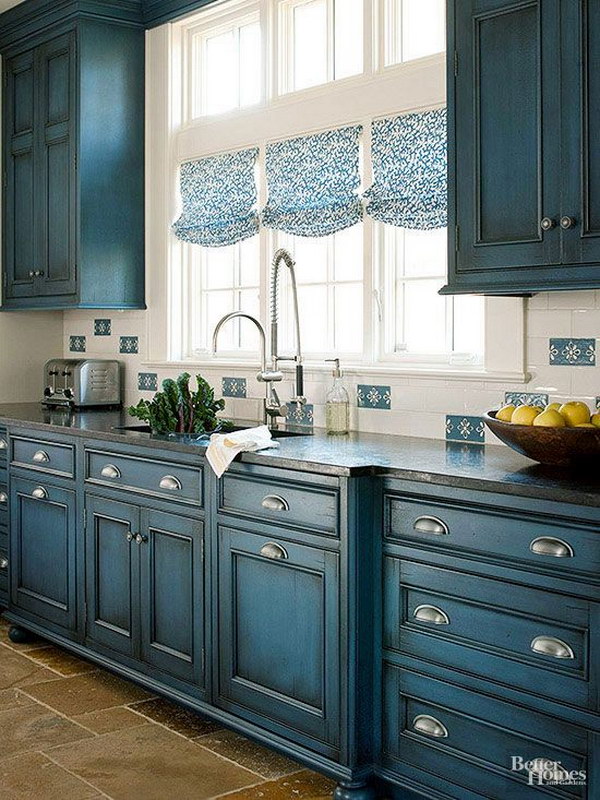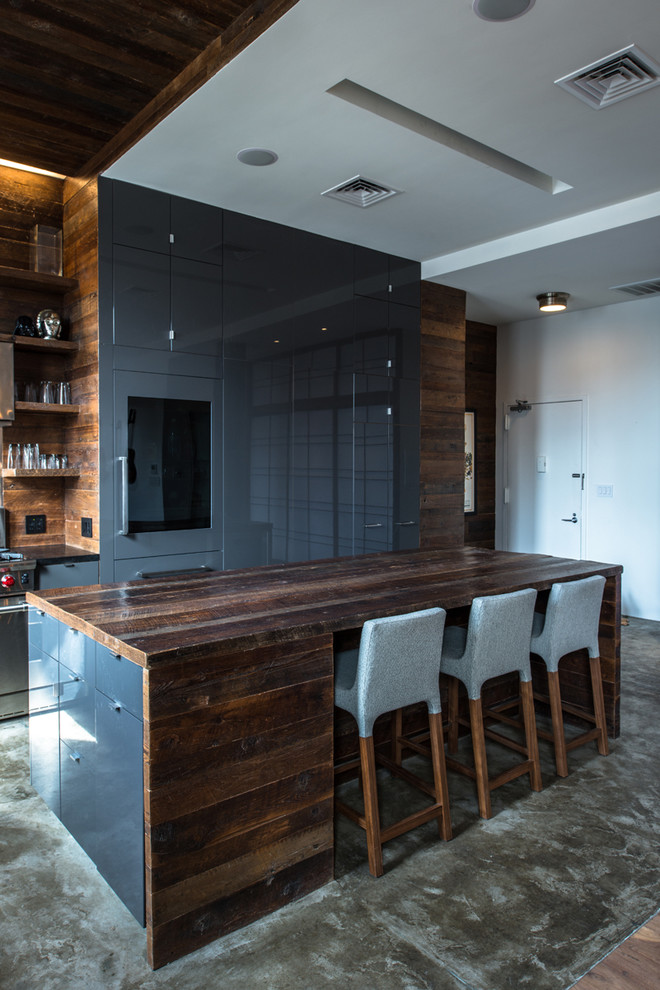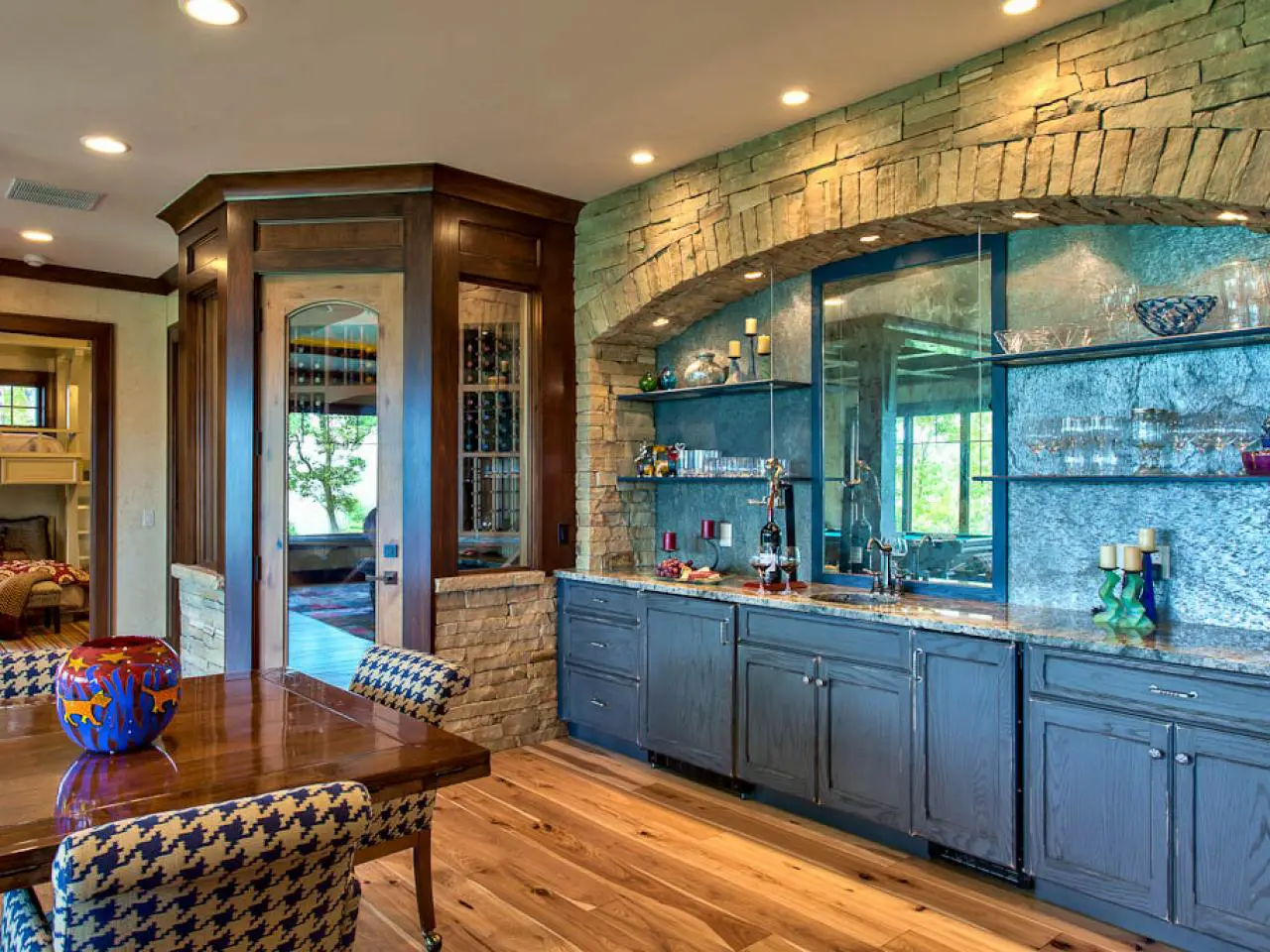Faux kitchen cabinets, also known as faux finish cabinets, are an increasingly popular choice in home design, offering a cost-effective and stylish alternative to traditional wood cabinetry. These cabinets are designed to mimic the look of high-end materials such as wood, metal, or stone, providing homeowners with the desired aesthetic without the associated expense. Let’s discuss different aspects of faux kitchen cabinets, from the materials and finishes used to installation and maintenance.

Understanding Faux Kitchen Cabinets
What Are Faux Kitchen Cabinets?
Faux kitchen cabinets are cabinets that are crafted to imitate the appearance of more expensive materials. Instead of using solid wood, metal, or stone, these cabinets are typically made from more affordable materials such as medium-density fiberboard (MDF), particleboard, or plywood. The faux finish is then applied to the surface to replicate the look of natural wood, stainless steel, or other premium materials.
The primary appeal of faux kitchen cabinets lies in their ability to provide the look of luxury at a fraction of the cost. For instance, a faux wood finish can give the appearance of rich, natural wood grains without the high price tag associated with hardwood. Similarly, a faux metal finish can replicate the sleek, modern look of stainless steel or brushed aluminum.
These cabinets are available in a wide range of styles and finishes, allowing homeowners to achieve virtually any design aesthetic. From traditional and rustic to modern and contemporary, faux kitchen cabinets can be customized to suit individual tastes and preferences. This versatility makes them an attractive option for many kitchen remodels.
Faux finishes can be applied using various techniques, including painting, staining, or laminating. Advanced techniques like distressing, glazing, or using specialized paints can enhance the realism of the faux finish, making it difficult to distinguish from the real material. These techniques are often employed by skilled artisans or specialized manufacturers.
Despite their aesthetic appeal, faux kitchen cabinets are not without their drawbacks. They may not offer the same level of durability and longevity as cabinets made from solid wood or metal. However, with proper care and maintenance, they can still provide many years of service, making them a viable option for budget-conscious homeowners.

Types of Faux Finishes
There are several types of faux finishes available for kitchen cabinets, each offering a unique look and feel. Understanding these options can help homeowners choose the best finish to achieve their desired aesthetic.
Faux Wood Finish: This is one of the most popular types of faux finishes for kitchen cabinets. It involves using paint or laminate to replicate the appearance of natural wood grains and textures. Techniques like wood graining and faux staining can create a realistic wood look, making it hard to distinguish from real wood.
Faux Metal Finish: Ideal for contemporary and industrial-style kitchens, faux metal finishes mimic the look of stainless steel, copper, or brushed aluminum. This finish is achieved using metallic paints or laminates, which can give cabinets a sleek, modern appearance without the high cost and weight of real metal.
Faux Stone Finish: For a more rustic or traditional look, faux stone finishes can be used to replicate materials like marble, granite, or slate. This finish is typically achieved through specialized painting techniques or the application of textured laminates, providing a high-end look without the associated expense.
Antiquing and Distressing: These techniques are used to give cabinets a vintage or aged appearance. Antiquing involves applying a glaze or stain to create an aged patina, while distressing involves intentionally adding marks, scratches, and worn areas to give the cabinets a weathered look. These finishes are popular in farmhouse and shabby chic kitchen designs.
Glazing: Glazing adds depth and dimension to faux finishes by applying a semi-transparent glaze over a base coat. This technique can enhance the look of wood grains, add a subtle sheen, or create a more complex, layered appearance. Glazing is often used in combination with other faux finishing techniques.
High Gloss Finish: For a sleek, modern look, high gloss finishes can be applied to faux kitchen cabinets. This involves using a high-gloss paint or laminate to create a shiny, reflective surface. High gloss finishes are particularly popular in contemporary and minimalist kitchen designs.

Benefits of Faux Kitchen Cabinets
Faux kitchen cabinets offer numerous benefits that make them an attractive option for homeowners looking to update their kitchens. Here are some of the key advantages:
Cost-Effective: One of the primary benefits of faux kitchen cabinets is their affordability. Because they are made from less expensive materials and require less labor-intensive processes than traditional cabinetry, they are generally more budget-friendly. This allows homeowners to achieve a high-end look without breaking the bank.
Versatility: Faux finishes can replicate a wide range of materials and styles, from rustic wood to sleek metal. This versatility means that faux kitchen cabinets can be customized to fit virtually any design aesthetic, making them suitable for both traditional and contemporary kitchens.
Low Maintenance: Many faux finishes are designed to be easy to clean and maintain. Unlike natural wood or metal, which may require regular polishing or sealing, faux finishes typically only need occasional wiping with a damp cloth to keep them looking their best. This makes them a practical choice for busy households.
Durability: While faux kitchen cabinets may not be as durable as solid wood or metal cabinets, they can still offer good durability with proper care. Many faux finishes are resistant to scratches, stains, and moisture, which helps to extend the lifespan of the cabinets.
Environmentally Friendly: Faux finishes often use less natural resources than traditional materials, making them a more environmentally friendly option. Additionally, many manufacturers use eco-friendly materials and processes in the production of faux kitchen cabinets, further reducing their environmental impact.
Quick Installation: Because faux kitchen cabinets are often lighter and easier to work with than traditional materials, they can typically be installed more quickly. This can be a significant advantage for homeowners looking to complete a kitchen renovation in a shorter timeframe.
Choosing the Right Faux Finish for Your Kitchen
Selecting the right faux finish for your kitchen cabinets involves considering several factors, including your design preferences, budget, and lifestyle. Here are some tips to help you make the best choice:
Assess Your Design Style: Consider the overall style of your kitchen and home when choosing a faux finish. If you have a traditional or rustic kitchen, a faux wood or stone finish might be the best fit. For modern or contemporary kitchens, consider faux metal or high gloss finishes. Look at inspiration photos and samples to see which finishes resonate with your design aesthetic.
Consider Your Budget: While faux finishes are generally more affordable than real materials, costs can still vary depending on the type of finish and the complexity of the application. Determine your budget upfront and choose a finish that aligns with your financial constraints. Remember to factor in any additional costs for installation and maintenance.
Evaluate Maintenance Requirements: Different faux finishes have different maintenance needs. For example, high gloss finishes may show fingerprints and smudges more easily, requiring more frequent cleaning. Faux wood finishes might require periodic touch-ups to maintain their appearance. Consider how much time and effort you are willing to invest in maintaining your cabinets.
Think About Durability: If you have a busy household with children or pets, you may want to choose a faux finish that is particularly durable and resistant to scratches and stains. Discuss the durability of different finishes with your manufacturer or installer to find the best option for your needs.
Get Professional Advice: Consult with a professional designer or cabinet maker who has experience with faux finishes. They can provide valuable insights and recommendations based on your specific kitchen layout and design goals. They can also show you samples and help you visualize how different finishes will look in your space.
Test Samples: Before making a final decision, test samples of different faux finishes in your kitchen. This will allow you to see how the finishes look under your kitchen’s lighting conditions and how they complement your existing décor. Testing samples can also help you gauge the quality and realism of the finishes.

Installation Process
The installation of faux kitchen cabinets follows a similar process to that of traditional cabinetry but with some additional considerations for the faux finishes. Here’s an overview of the typical installation process:
Planning and Design: The first step is to plan the layout and design of your kitchen cabinets. This involves taking accurate measurements of the kitchen space, determining the placement of cabinets, and selecting the type of faux finish. Working with a professional designer or contractor can help ensure that the layout is functional and aesthetically pleasing.
Material Selection: Choose the materials for your faux kitchen cabinets, including the base material (MDF, particleboard, plywood) and the type of faux finish. Consider factors such as durability, maintenance, and cost when making your selections.
Preparing the Space: Before installation begins, the kitchen space must be prepared. This may involve removing old cabinets, repairing walls, and ensuring that the kitchen is clean and free of debris. Proper preparation is essential for a smooth installation process.
Assembling the Cabinets: If you are purchasing pre-fabricated cabinets, they will need to be assembled according to the manufacturer’s instructions. If you are working with a custom cabinet maker, the cabinets will be built to your specifications. The faux finish is typically applied at this stage, either in the workshop or on-site.
Installing the Cabinets: The installation process involves mounting the cabinets to the walls and securing them in place. This requires precision to ensure that the cabinets are level and properly aligned. Professional installers use specialized tools and techniques to achieve a seamless installation.
Finishing Touches: Once the cabinets are installed, any additional elements such as hardware, trim, and molding are added. The final step is to inspect the cabinets for any imperfections and make any necessary touch-ups to the faux finish. This ensures that the cabinets look their best and are ready for use.

Maintenance and Care
Proper maintenance and care are essential to keep faux kitchen cabinets looking their best and to extend their lifespan. Here are some tips for maintaining and caring for your faux cabinets:
Regular Cleaning: Clean your faux kitchen cabinets regularly to prevent the buildup of dust, grease, and grime. Use a soft cloth or sponge and a mild detergent to wipe down the surfaces. Avoid using abrasive cleaners or scrubbers that could damage the faux finish.
Avoid Excessive Moisture: While many faux finishes are moisture-resistant, it’s still important to avoid excessive moisture exposure. Wipe up spills immediately and avoid placing wet items directly on the cabinet surfaces. Use coasters and placemats to protect the finish from water rings and stains.
Protect from Heat: Keep your faux kitchen cabinets away from direct sources of heat, such as stovetops and ovens. Excessive heat can damage the finish and cause warping or discoloration. Use heat-resistant mats or trivets to protect the cabinets from hot cookware.
Touch-Up Scratches and Chips: If your faux finish becomes scratched or chipped, touch it up promptly to prevent further damage. Many manufacturers offer touch-up kits specifically designed for their finishes. Follow the instructions carefully to achieve a seamless repair.
Re-Sealing and Re-Finishing: Some faux finishes, particularly those that mimic wood or stone, may require periodic re-sealing or re-finishing to maintain their appearance. Consult with your cabinet manufacturer or installer to determine the recommended maintenance schedule and products for your specific finish.
Inspect Regularly: Regularly inspect your faux kitchen cabinets for any signs of wear or damage. Look for loose hardware, peeling finishes, or structural issues. Address any problems promptly to prevent further damage and ensure that your cabinets remain in good condition.

Common Mistakes to Avoid
Overlooking Quality
One common mistake when choosing faux kitchen cabinets is overlooking the importance of quality. While faux finishes can be a cost-effective option, it’s essential to invest in high-quality materials and finishes to ensure durability and a realistic appearance. Low-quality faux finishes may not hold up well over time and can detract from the overall look of your kitchen.
To avoid this mistake, research reputable manufacturers and suppliers who are known for producing high-quality faux finishes. Look for reviews and testimonials from other homeowners who have used their products. Additionally, request samples to evaluate the quality of the finishes before making a purchase.
Ignoring Maintenance Requirements
Another mistake is ignoring the maintenance requirements of faux kitchen cabinets. While faux finishes are often low-maintenance, they still require regular care to keep them looking their best. Neglecting maintenance can lead to a buildup of dirt and grime, as well as damage to the finish over time.
Make sure you understand the specific maintenance needs of your chosen faux finish and are prepared to follow the recommended care routine. This will help you maintain the appearance and longevity of your cabinets.
Inadequate Preparation
Inadequate preparation before installation is another common mistake. Failing to properly prepare the kitchen space can lead to issues such as misaligned cabinets, gaps, and uneven surfaces. This can detract from the overall appearance of your kitchen and compromise the functionality of the cabinets.
Ensure that your kitchen is thoroughly cleaned and any necessary repairs are made before installation begins. Take accurate measurements and plan the layout carefully to avoid any installation issues. Working with a professional installer can help ensure that the preparation and installation process goes smoothly.

Skimping on Professional Installation
While it may be tempting to save money by installing faux kitchen cabinets yourself, skimping on professional installation can be a costly mistake. Proper installation requires precision and expertise to ensure that the cabinets are level, secure, and properly aligned. DIY installation can result in gaps, uneven surfaces, and other issues that can affect the overall look and functionality of your kitchen.
Invest in professional installation to ensure that your faux kitchen cabinets are installed correctly. This will help you achieve a polished, high-quality look and ensure that your cabinets function properly for years to come.
Not Considering the Overall Design
Not considering the overall design of your kitchen when choosing faux finishes can lead to a disjointed and uncoordinated look. It’s important to select finishes that complement the rest of your kitchen’s design elements, including countertops, backsplash, flooring, and appliances.
Take the time to create a cohesive design plan that considers all aspects of your kitchen. Consult with a professional designer if needed to ensure that your faux finishes enhance the overall aesthetic of your space.
Choosing Trends Over Timelessness
While it’s fun to incorporate the latest design trends into your kitchen, choosing trendy faux finishes over timeless options can be a mistake. Trends come and go, and what looks stylish today may look dated in a few years. This can affect the long-term appeal and value of your kitchen.
Consider selecting faux finishes that have a timeless appeal and can easily adapt to changing design trends. Neutral colors, classic patterns, and versatile finishes are more likely to stand the test of time and maintain their appeal for years to come.

Are faux kitchen cabinets durable?
Faux kitchen cabinets can be durable if made from high-quality materials and finishes. While they may not be as robust as solid wood or metal cabinets, many faux finishes are designed to be resistant to scratches, stains, and moisture. Proper care and maintenance can help extend the lifespan of faux kitchen cabinets, making them a practical choice for many homeowners.
How do I clean and maintain faux kitchen cabinets?
Cleaning and maintaining faux kitchen cabinets typically involves regular wiping with a soft cloth and mild detergent. Avoid using abrasive cleaners or scrubbers that could damage the finish. It’s important to wipe up spills promptly to prevent staining and to protect the cabinets from excessive moisture and heat. Periodic touch-ups and re-sealing may be necessary for certain finishes to maintain their appearance.
Can I install faux kitchen cabinets myself?
While it is possible to install faux kitchen cabinets yourself, professional installation is recommended to ensure the best results. Proper installation requires precision and expertise to ensure that the cabinets are level, secure, and properly aligned. Professional installers have the tools and experience to achieve a polished and high-quality finish, reducing the risk of installation issues and ensuring the longevity of your cabinets.
What are the cost benefits of choosing faux kitchen cabinets?
Faux kitchen cabinets offer significant cost benefits compared to cabinets made from solid wood, metal, or stone. The materials and finishes used in faux cabinets are generally more affordable, and the manufacturing processes are less labor-intensive. This allows homeowners to achieve a high-end look at a fraction of the cost. Additionally, faux cabinets can be easier and quicker to install, further reducing labor costs.
How do I choose the right faux finish for my kitchen?
Choosing the right faux finish for your kitchen involves considering your design preferences, budget, and lifestyle. Assess the overall style of your kitchen and home to determine which finishes will complement your existing décor. Consider the maintenance requirements and durability of different finishes, and consult with professionals or request samples to evaluate the quality and realism of the finishes. Testing samples in your kitchen can help you visualize how different finishes will look under your lighting conditions and ensure that you make the best choice for your space.

Related Posts:
- PVC Kitchen Cabinets
- Kitchen Cabinets Makeover Before After
- Kitchen Cabinets Alberta
- Quaker Kitchen Cabinets
- Mahogany Maple Kitchen Cabinets
- Waterborne Acrylic Enamel Paint Kitchen Cabinets
- Kitchen Cabinets Appleton Wi
- Metal Outdoor Kitchen Cabinets
- Diy Antique Kitchen Cabinets
- Cream Kitchen Cabinets With Chocolate Glaze